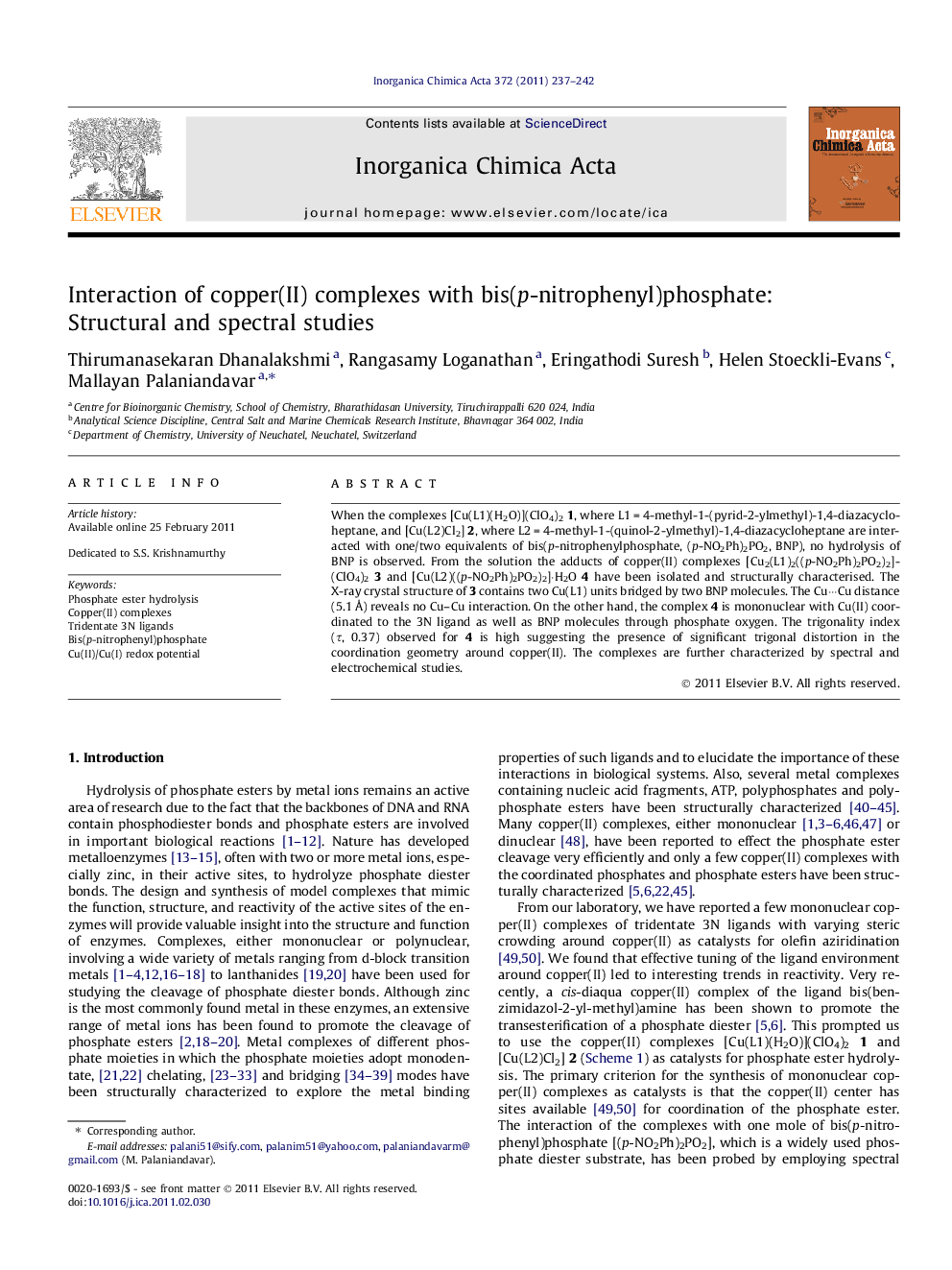| Article ID | Journal | Published Year | Pages | File Type |
|---|---|---|---|---|
| 1308896 | Inorganica Chimica Acta | 2011 | 6 Pages |
When the complexes [Cu(L1)(H2O)](ClO4)21, where L1 = 4-methyl-1-(pyrid-2-ylmethyl)-1,4-diazacycloheptane, and [Cu(L2)Cl2] 2, where L2 = 4-methyl-1-(quinol-2-ylmethyl)-1,4-diazacycloheptane are interacted with one/two equivalents of bis(p-nitrophenylphosphate, (p-NO2Ph)2PO2, BNP), no hydrolysis of BNP is observed. From the solution the adducts of copper(II) complexes [Cu2(L1)2((p-NO2Ph)2PO2)2]-(ClO4)23 and [Cu(L2)((p-NO2Ph)2PO2)2]·H2O 4 have been isolated and structurally characterised. The X-ray crystal structure of 3 contains two Cu(L1) units bridged by two BNP molecules. The Cu···Cu distance (5.1 Å) reveals no Cu–Cu interaction. On the other hand, the complex 4 is mononuclear with Cu(II) coordinated to the 3N ligand as well as BNP molecules through phosphate oxygen. The trigonality index (τ, 0.37) observed for 4 is high suggesting the presence of significant trigonal distortion in the coordination geometry around copper(II). The complexes are further characterized by spectral and electrochemical studies.
Graphical abstractThe complexes [Cu(L1)(H2O)](ClO4)21 and [Cu(L2)Cl2] 2 interact with bis(p-nitrophenylphosphate, (p-NO2Ph)2PO2 to form, respectively, the dinuclear (3) and mononuclear (4) adducts with different trigonal constraints in the coordination geometry around copper(II).Figure optionsDownload full-size imageDownload as PowerPoint slideHighlights► Two Cu(II) complexes, which fail to hydrolyze bis(p-nitrophenyl)phosphate (BNP), are isolated. ► The BNP adduct of one of the complexes contains mononuclear copper(II) center. ► The BNP adduct of the other complex contains a dinucelar copper(II) center bridged by BNP.
